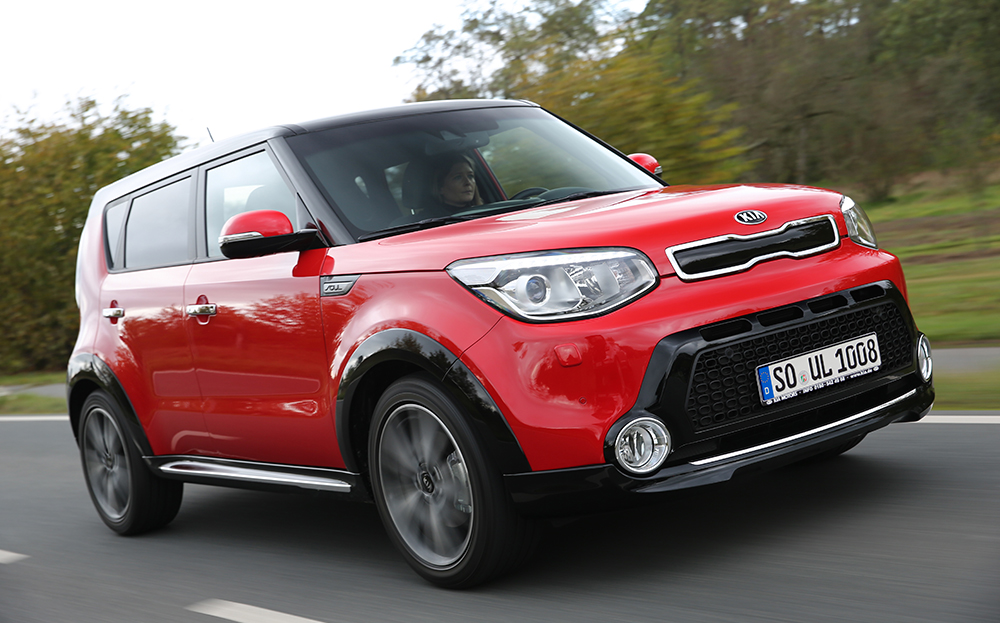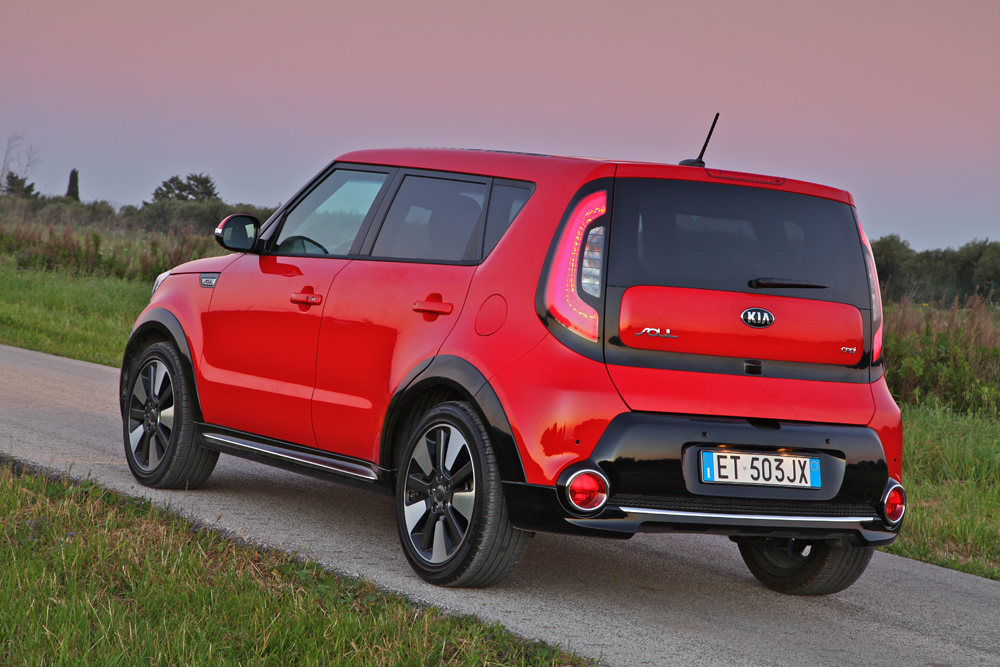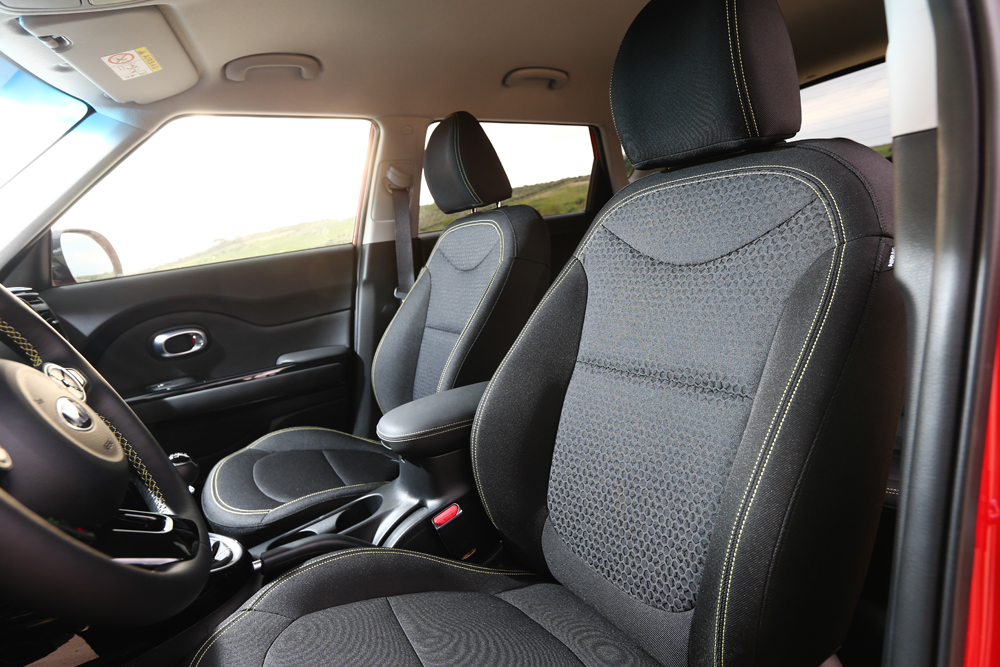First drive review: Kia Soul 1.6 CRDi (2014-on)
Kia’s eccentric-looking Soul blazed a trail for small SUVs, but even though the segment is now awash with imitators the South Korean car has retained its offbeat individuality
Kia Soul 1.6 CRDi, £16,000 (estimate)
IN 2008, when Kia first rolled out the Soul, it felt like something truly different. A pumped-up hatch rocking a distinctly SUV vibe? “Wow,” people said. Or in some cases, “Yikes,” for this was a car that, like Marmite, morris dancing and Justin Bieber, violently divided opinion. Either way, we seemed to be in the presence of the new. The Soul had what was eventually named the B-SUV, or “novelty toaster”, segment pretty much to itself.
Look at us now, though. Six years on, novelty toasters are popping up all over the place. The Nissan Juke, the Ford EcoSport, the Renault Captur, the Vauxhall Mokka, the Skoda Yeti — we’ve got novelty toasters coming out of our ears. Or certainly out of our side roads.
We’re starting to have Kias coming out of our ears/side roads too. More than 72,000 people in the UK bought one of the South Korean company’s cars last year and Kia (which has crept up to fifth in the global sales charts) is openly plotting a rapacious drive towards the magic 100,000-per-annum mark within the next few years.
Not that the Soul is intended to play a big part in this land grab. Kia projects a modest 3,000 Soul sales this year, and will continue to look for the big numbers from the good but derivative Sportage SUV and the trusty but bizarrely named Cee’d hatchback and its variants. (The Cee’d, one notes, has not fallen on stony ground.)
The Soul’s role is largely symbolic. It’s there to prove that this ambitiously mainstream company can, when it wants to, do something a bit different, loosen its tie and kick back a little.
The Soul’s role, meanwhile, is largely symbolic. It’s there to prove that this ambitiously mainstream company can, when it wants to, do something a bit different, loosen its tie and kick back a little. To this extent it’s a self-fulfilling move. Simply by having a car such as the Soul on its books Kia reveals itself to be the kind of company that has cars such as the Soul on its books. It’s the maverick, rogue item that (by a process of osmosis, and in accordance with a “whole-range view” car buyers possibly buy into and possibly don’t) makes the other cars in the showroom seem a touch more maverick and rogue too.
How wild and crazy is the Soul, though? It’s not as if Kia has gone and attached a giant cackling gorilla’s head to the bonnet, or kitted out the car to play jingles like an ice cream van — extremes that might have tempted the California-based design team, given how the marketplace is crowding up. After all, the rival Juke looks like a Nike trainer on wheels, and the nubby EcoSport has started bustling about the place with its spare wheel hanging off its back door.
Give the Californians points for restraint, though, because the new Soul is recognisably the old Soul, but tighter and smarter. The roof has once again been smacked flat with a spade. Kia’s signature “tiger nose” grille is stretched more tautly this time, as if the tiger has just accidentally snorted a bee. Bug-eyed foglamps hog the front corners. Overall there remains some flavour of a pleasantly chunky Jeep about it.
The rear light clusters are arranged in a pair of tall, wedgy stacks on a tailgate that is intended to invoke visually a backpack. This is apparently a premeditated appeal to the youth market, founded on evidence (on the face of it indisputable) that young people like backpacks.
Does that mean they want to drive a car that looks like a backpack around the boot area, though? You’ve got to trust the experts on these things. Best just to note that when the brake lights come on they cutely clinch the car in a pair of LED brackets. (The whole world loves brackets.)
The interior has been pulled a long way upmarket, and the level of equipment with it. There is an optional automatic beam dip, parking assist and a reversing camera, plus planning permission for an expansive glass top that effectively converts the car into a greenhouse. You can also pump the hi-fi through a set of funky, upward-thrusting tower-style speakers.
As for genuine, wild and crazy innovation, though . . . well, the silver start button is located right beside the gearshift. Kia says this has been done to “minimise physical movement required to start the vehicle and move off” — as if the start button in other cars was usually to be found in the boot or under the cushion of one of the rear seats.
In my experience, though, the start button tends to be on the dashboard near the steering wheel. That’s certainly where it sits in the Range Rover Evoque I’ve recently been driving (itself a bit of a novelty toaster, albeit a posh one) and I can’t say I’ve found the exertion required to operate it from there unduly wearing, or discovered that I’m noticeably more tired in the evenings than I was when I was driving the Soul. But maybe I’ve been doing it wrong.
You can order your Soul with either a diesel or petrol 1.6-litre engine. The former was quiet and easy to manage; the latter felt underwhelming and even slightly out of breath a lot of the time. Thanks to some body stiffening, though, the ride has been smoothed out and the noise insulation greatly improved compared with the old version, which sounded as if you were driving with the windows open even when you weren’t.
Nevertheless, the Soul has been built on the same platform as the Cee’d, and in the end, like the Cee’d, it’s a well-mannered, conventional car but inserted into an eccentric box. But credit where it’s due: given the homogenisation of vehicles in general we should all be in favour of eccentric boxes.


